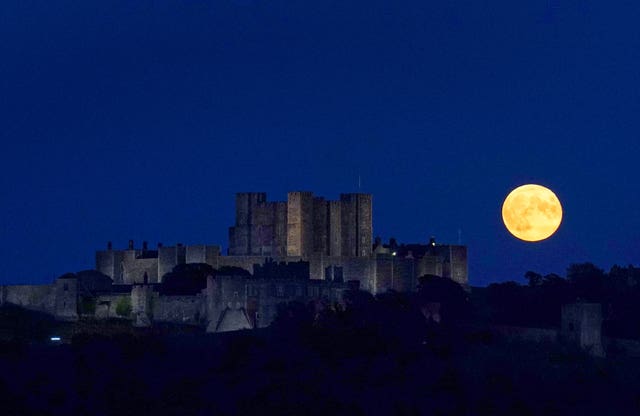A blue supermoon will light up the sky on Monday, in a rare event that is expected to be one of the biggest and brightest moons of the year.
A blue moon is not named after the colour, but for the timing of full moons during the year.
Blue moons usually occur about every two or three years, but unusually in 2018 there were two blue moons, only two months apart.
The next time there will be two blue moons in a year will be 2037.

The moon has also been called the green corn moon, the grain moon, and the red moon for the reddish colour it often takes on in the summer haze.
The supermoon means Earth’s satellite is closest to the planet.
During a supermoon, the moon appears up to 14% bigger and 30% brighter compared with when it is furthest away.
The term supermoon was coined by astrologer Richard Nolle in 1979 as either a new or full Moon that occurs when the Moon is within 90% of its closest approach to Earth.
This will be the first of four consecutive supermoons this year, with the full moons in September and October virtually tied for the closest of the year.
The moon will rise at about 7.26pm, and the best time to catch a glimpse is when conditions are best suited to a clear sky.
This means low cloud cover, favourable weather and no obstructions on the horizon, such as buildings or trees.




Comments: Our rules
We want our comments to be a lively and valuable part of our community - a place where readers can debate and engage with the most important local issues. The ability to comment on our stories is a privilege, not a right, however, and that privilege may be withdrawn if it is abused or misused.
Please report any comments that break our rules.
Read the rules here